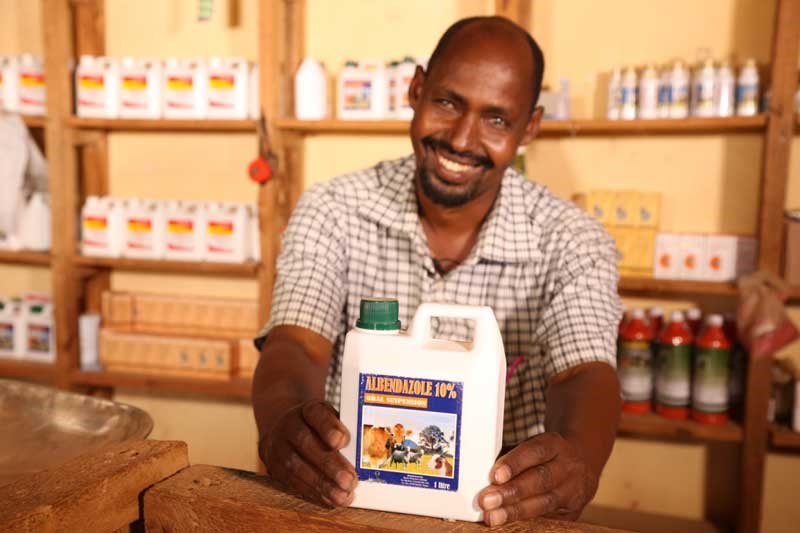After graduating from college in 2007, Mohammed Ugas Sheikh, an Animal Health Technician, started a mobile veterinary clinic in Wajir County.
The clinic was his bicycle and a cooler box he used to protect his drugs from the hostile heat of Northern Kenya.
For two years, Mohammed worked alongside pastoralists in Wajir, especially those living along the Somali-Kenya border.
In 2009, he established a small agro-vet. He had identified the need for many pastoralists to access animal drugs so he aimed to grow and serve the entire Wajir County.
In order to achieve this goal, it was important that he sets up business at a central point, easily accessible from all areas of the county. In 2014, he finally set up the Wajir Agro-vet Center.
Sourcing for the animal drugs became a challenge for Mohammed, as animal input suppliers mostly based in Nairobi did not consider Wajir County commercially viable.
The terrain was terrible, the distances long and there was a general perception that communities there were too poor to afford animal inputs. Mohammed had to rely on a single supplier to stock his shop.
During these difficult moments, Mohammed interacted with Kenya Markets Trust (KMT), a Non-Governmental Organization (NGO) that supports the growth of sustainable value chains by improving market systems. KMT eventually linked Mohammed to three large Animal Input Suppliers.
Bimeda, one of the suppliers who were connected to Mohammed were first in willing to try the Wajir market. They sold their products to Mohammed at a competitive rate. Within a fortnight, Mohammed placed a second order amounting to Sh500, 000.
The company then realized a need for their own market research, which concluded that Wajir and neighbouring Counties were indeed commercially viable.
Within three months, the linkages initiated by KMT allowed Bimeda to see the economic sense of setting up an office in Wajir. They gave Wajir Agrovet the rights to become their sole agent in the County. Six months later there was a new business boom, which saw other big companies also entering the new market.
Today, Wajir Agrovet is the sole distributor in Wajir County with exclusive products from eight different international veterinary input manufacturers.
KMT also introduced Mohammed to the agent model whereby a large agro-vet is linked to smaller ones at the grass root levels. The model is aimed at enhancing access of affordable quality drugs to the pastoralists while establishing sustainable businesses.
In 2016, Wajir Agrovet, in partnership with KMT, trained 32 agents from Wajir County. The training took place in Mohammed’s shop and consisted of practical exercises for easy learning. After the training, 27 agents from across the County continued to work under Wajir Agrovet.
Wajir Agrovet clientele thereafter increased from just ten customers a day to 55. The sales increased from Sh60, 000 per month to Sh600, 000 per month in dry seasons and Sh1.5 million per month during rainy seasons.
To market the availability of drugs further, Mohammed also participated in radio promotions, which have enlightened pastoralists from all over the County now seeking his services or those of his agents. Wajir Agrovet also holds field promotions at the community level to enhance knowledge on identification of diseases, quality drugs, and drug administration and handling.
Since 2015, Mohammed together with its agents, have been able to serve over 8,000 pastoralists in Wajir and neighbouring Counties.
“Animal health and prices have improved greatly in the region. On average, pastoralists now fetch up to Sh9, 000 for a Grade One goat, compared to Sh1, 500 for a similar animal in 2014.
“Additionally, the pastoralists are now more knowledgeable about diseases and have plugged into the reporting chain set up by the County government to monitor the emergence of veterinary diseases,” says Mohamed.
By Donald Ngala



